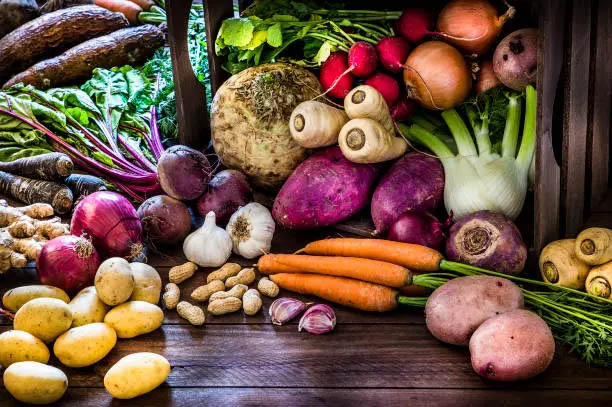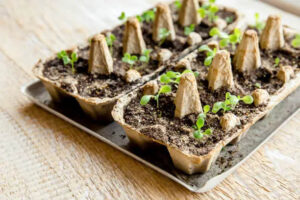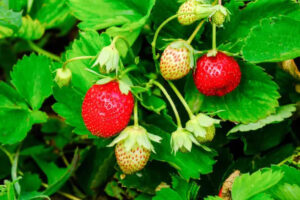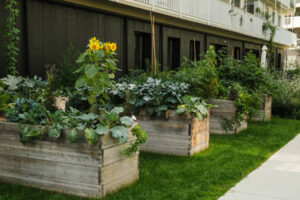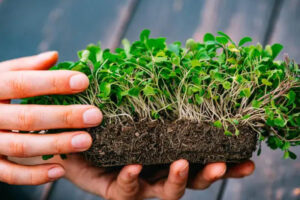Root vegetables are the hard-working heroes of the culinary world, often overlooked despite their nutritional prowess and versatile nature. From sweet carrots to earthy beets and robust turnips, root vegetables grow underground where they absorb nutrients from the soil, resulting in a wealth of flavors and health benefits. This article dives deep into the world of root vegetables, discussing their types, health benefits, culinary uses, and tips for growing them at home.
What are Root Vegetables?

Root vegetables are plants that store nutrients in their roots, developing edible, underground parts. Root vegetables are packed with fiber, vitamins, and minerals. They are particularly high in vitamin C, B vitamins, and antioxidants. Being rich in complex carbohydrates, they provide sustained energy without spiking blood sugar levels. The high fiber content also aids in digestion and helps maintain a healthy gut. Root vegetables are culinary chameleons, capable of transforming into a variety of dishes. The category includes a variety of vegetables from botanical families, characterized by their growth beneath the surface of the soil.
Types of Root Vegetables:
- Carrots: Perhaps the most universally loved root vegetable, known for their bright orange color, although they can also be purple, black, red, white, and yellow.
- Beets: Known for their deep red color and sweet, earthy flavor, beets are rich in antioxidants and can be eaten raw, cooked, or pickled.
- Turnips: These offer a slightly peppery flavor and can be used in everything from soups to salads. Young, tender turnips are great raw, while older turnips are best cooked.
- Radishes: Fast-growing and with a peppery punch, radishes are perfect for adding a crisp texture to salads and dishes.
- Parsnips: Similar to carrots but paler and with a sweeter, nuttier flavor, parsnips are excellent roasted or in soups.
- Sweet Potatoes: Despite the name, they are only distantly related to potatoes. Sweet potatoes are rich in beta-carotene and can be baked, roasted, or mashed.
- Potatoes: The most common root vegetable, incredibly versatile and an essential energy source globally.
- Garlic: Known for its pungent flavor and aroma, garlic is a staple in many cuisines, providing both culinary and medicinal benefits. It can be used raw, roasted, or as a seasoning in countless dishes.
- Onions: Versatile and flavorful, onions come in various colors, including white, yellow, and red. They can be eaten raw, caramelized, sautéed, or used as a base in soups, stews, and sauces.
Growing Root Vegetables at Home

Growing root vegetables at home is a fulfilling activity that can enhance your cooking and provide you with fresh, nutritious produce. With proper soil preparation, careful selection of seeds, regular maintenance, and pest management, your root vegetable garden can be both a productive and enjoyable part of your home gardening experience.
Selecting the Right Varieties
When choosing root vegetables to grow, consider your local climate and soil type, as these factors significantly influence their growth. Opt for varieties that are known to thrive in your region for the best results. Local gardening centers or cooperative extensions are excellent resources for finding suitable varieties.
Preparing the Soil
Root vegetables thrive in loose, well-drained soil as they need space to expand and grow. Heavy, clay-rich soils can be amended with compost or aged manure to improve drainage and texture. Additionally, consider raising your beds to further improve drainage, which is particularly beneficial for crops like carrots and radishes that require deep, well-drained soil to develop properly.
- pH Levels: Most root vegetables prefer slightly acidic to neutral soil (pH 6.0 to 7.0). Test your soil and amend it if necessary. Lime can be added to increase the pH, while sulfur can lower it.
- Tilling the Soil: Before planting, till your garden bed to a depth of at least 12 inches to loosen the soil and remove rocks and debris that could obstruct growth.
Planting
Root vegetables can often be planted early in the spring as they can generally withstand light frosts. For crops like beets and carrots, you can continue to plant in intervals of 2-3 weeks for a continuous harvest throughout the growing season.
- Sowing Seeds: Plant seeds directly in the garden bed, as most root vegetables do not transplant well. Sow seeds at the depth recommended on the seed packet, usually about twice the size of the seed itself.
- Spacing: Proper spacing is crucial to avoid crowding and to allow each plant enough room to develop. Thin seedlings early, which helps prevent competition for nutrients and reduces the risk of disease.
Watering and Mulching
Consistent moisture is vital for the development of root vegetables. Inconsistent watering can lead to issues like cracking or woody textures. Aim to keep the soil moist but not soggy. Applying a layer of organic mulch, such as straw or shredded leaves, can help maintain soil moisture, regulate soil temperature, and suppress weeds.
Fertilization
While root vegetables don’t require as much nitrogen as leafy greens, they benefit from phosphorus and potassium for strong root development. Use a balanced, slow-release organic fertilizer at planting and possibly a side dressing midway through the growing season, depending on the crop’s needs and soil fertility.
Pest and Disease Management
Common pests that affect root vegetables include root maggots, aphids, and flea beetles. Crop rotation and good soil management can reduce the risk of pests and diseases. Using floating row covers can also protect your crops from insects. Planting root vegetables alongside aromatic herbs or alliums (like onions and garlic) can help repel certain pests naturally.
Harvesting
Knowing when to harvest root vegetables is crucial for optimal flavor and texture. Most root vegetables are ready to harvest when their tops begin to break through the soil surface, but you can also check the size by gently uncovering the top of the root with your fingers.
- Carrots and radishes are often ready as soon as they reach a usable size.
- Beets may take a bit longer and can be harvested when they are about the size of a golf ball or larger.
- Potatoes are ready when the foliage begins to die back. Wait two weeks after the foliage dies to allow the skin to toughen up for storage.

Root vegetables are a staple in kitchens around the world, valued for their nutritional benefits and versatility. Whether roasted, mashed, or used to add crunch to salads, these underground treasures can elevate any meal. Additionally, their ability to be stored for extended periods makes them an excellent resource for year-round cooking. By incorporating more root vegetables into your diet, you’re not only enjoying delicious flavors but also boosting your health with every bite.

